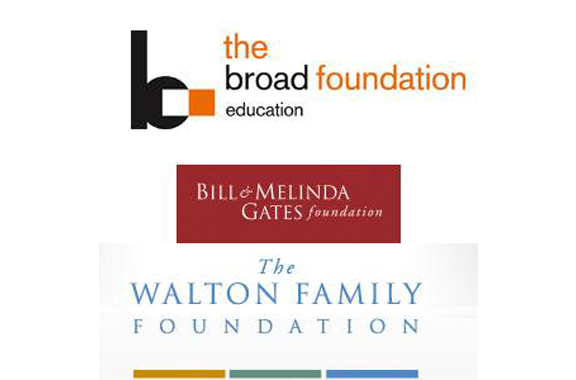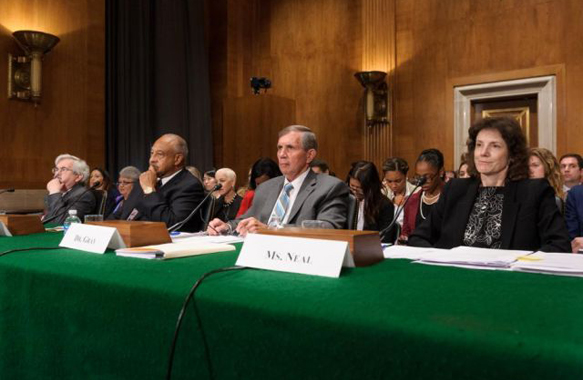‘System challengers’ get growing share
San Francisco – As more and more foundation money floods into K-12 education, it is being channeled to fewer and fewer groups, according to new research presented at the American Educational Research Association meeting here last week.
Researchers also found that foundation money is moving away from traditional public schools and toward “challengers to the system”—primarily charter schools—and that the funders in general are becoming much more active in shaping how those challengers develop.
“We’ve only scratched the surface of looking at support from philanthropies alongside federal funding,” said Sarah Reckhow, an assistant professor of political science at Michigan State University in East Lansing, who co-wrote one of the studies with doctoral student Jeffrey W. Snyder.
The total assets of the United States’ 76,000 foundations has grown from an estimated $272 billion in 1995 to $625 billion in inflation-adjusted dollars in 2012, according to the Urban Institute at the Washington-based American Institutes for Research.
The Michigan State researchers tracked grants from the 15 foundations that gave the most to K-12 education in 2000, 2005, and 2010. Several of those—the Carnegie Corporation of New York, the Bill & Melinda Gates Foundation, the William and Flora Hewlett Foundation, the Joyce Foundation, the Wallace Foundation (formerly the Wallace-Reader’s Digest Funds), and the Walton Family Foundation—also support some coverage in Education Week.
At the start of the decade, less than a quarter of K-12 giving from top foundations—about $90 million in all—was given to the same few groups. Five years later, 35 percent of foundation giving, or $230 million, went to groups getting support from other foundations, and by 2010, $540 million, representing 64 percent of major foundation giving for K-12, was similarly aligned.
“Not only are they giving more, but they are giving more, faster, and we find that very interesting,” Mr. Snyder said. “Every five years, it roughly doubles—the number of grantees getting at least $1 million.”
The type of groups funded shifted during that time, too. In 2000, the top five groups subsidized with philanthropic dollars were the Rural School and Community Trust, based in Washington; Annenberg Challenge schools in Detroit and Chicago; the Bay Area School Reform Collaborative, a local California group; and the Public Education Network, a network of local education funds whose central office has since closed.
A decade later, three of the five top-funded groups were linked with charter schools: the Charter School Growth Fund, in Broomfield, Colo.; the NewSchools Venture Fund in Oakland, Calif.; and the Knowledge Is Power Program, or KIPP, school network, based in San Francisco.
Another top-five group was Teach For America, a New York City-based organization that enlists young college graduates to teach in disadvantaged schools. The last was the D.C. Public Education Fund, which supports school improvement in the District of Columbia.
“We see over time that
Foundations also became a lot more hands-on with the charter sector they were helping create, according to Rand Quinn, an assistant professor of education at the University of Pennsylvania.
Mr. Quinn and his co-authors—Debra Meyerson, an associate professor of education at Stanford University, and Megan Tompkins-Stange, a public-policy lecturer at the University of Michigan—tracked the influence of foundations on California charter schools.
They analyzed tax forms, annual reports, meeting minutes, achievement-test results, and other administrative data and interviewed 41 charter leaders and their foundation supporters.
Beyond providing money, Mr. Quinn and his colleagues learned, foundations reviewed and recombined the elements of existing charters to develop new and preferred models for schools; furthered those models by enforcing evaluation systems that included the elements they wished to foster for all grantees; and supported education, training, and professional development to build up a new pool of teachers and leaders to staff the schools.
Mr. Quinn found that even within the charter school sector, foundations focused on expanding the biggest players, the charter-management organizations, rather than single-school charter holders. In the process, both the funders and the charter operators reported that there was less focus on being integrated into and responsive to a particular community, and more on “building a brand” for the schools that could be scaled up quickly.
Katrina E. Bulkley, a professor of education leadership at Montclair State University in Montclair, N.J., who was not involved in either study, said the changes also point to a broader trend of their adopting a more rational approach to making grants, focused on requiring measurable results and providing money to the organizations that can produce them.
“Grantmaking is a key way of how foundations signify who they consider valuable contributors to school reform,” Ms. Bulkley said.
Vol. 32, Issue 30, Page 10












Leave A Comment